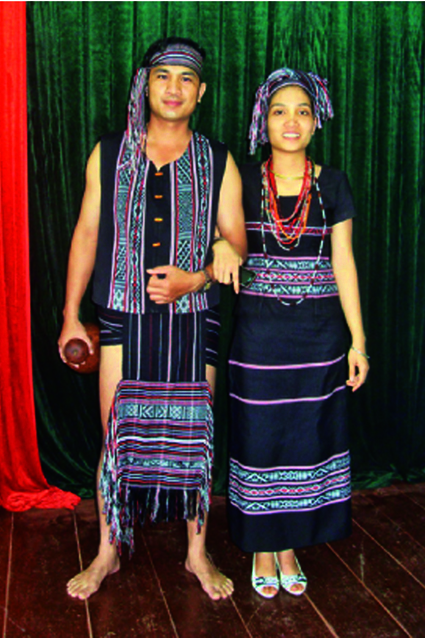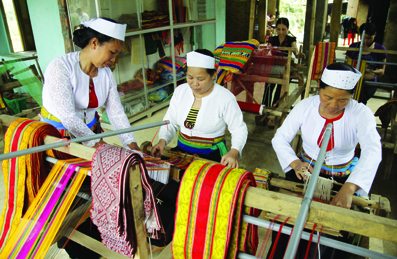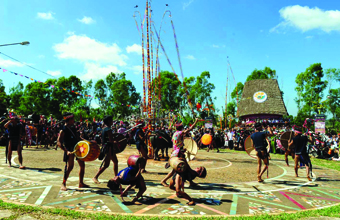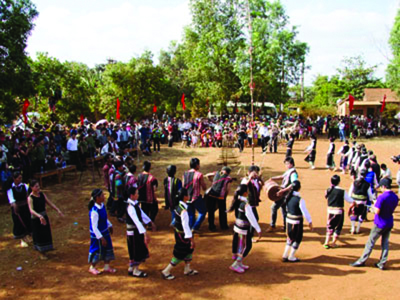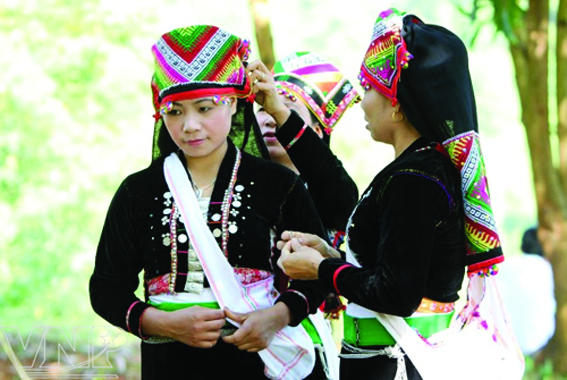>>The customary law of the “Co” ethnic minority
Ta Thi Tam
Ethnology Institute
The Co, a Mon-Khmer language group, are among the earliest inhabitants in the Truong Son range-Central Highlands region.
The group, also known as Cua, Khua, Trau, Phong Mieu, Moi Tra Bong and Thanh Bong, lives mostly on high mountains in the central provinces of Quang Ngai and Quang Nam with a population of nearly 34,000.
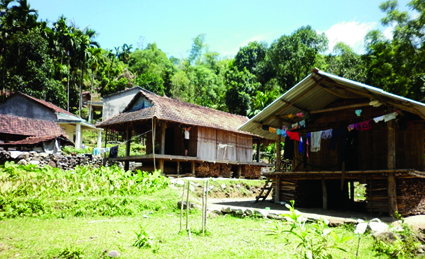 |
Simple stilt houses of the Co in Quang Ngai province __Photo: baoquangngai.vn |
Living in steep and dangerous areas, the Co grow rice, maize, potato and fruit and industrial trees. Rice is the main food, followed by maize, cassava and vegetables. The group grows rice on land cleared for the first time while land cleared for the second time which is less fertile is for maize and cassava cultivation. Vegetables are grown on land plots around their houses.
Apart from rice and secondary crops, the Co grow betel and cinnamon which are known for their special quality and can be bartered for cattle, jewelry and building materials.
In the past, the Co lived in a long house accommodating families of five generations or even more, each of which was an independent unit with separate economic activities. Today, a Co patriarchal family has members of three generations at most, in which the father is the family head.
A Co clan consists of members of paternal consanguinity, and daughters-in-law and adopted children who enjoy benefits as other clan members. A Co family name used to bear the name of a plant, an animal or a place associated with legends about the origin of the group. But now the group uses family names of the Kinh such as Pham, Hoang, Le and Ho. Each Co clan is headed by a man who is conversant with traditional customs and practices and family records. A Co clan head settles all family affairs based on the group’s customary law.
The site of a village is selected by representatives of families in that village. A Co village must be close to a stream and a forest and have land for cultivation. It is surrounded with fences, bamboo strikes and traps.
A Co village is divided into different areas for residence, farming and rituals.. Land and natural resources within the village are all under its ownership and management. All villagers have equal rights in using water sources and exploiting farming land and forest products. A village is managed by its head who is a prestigious man selected by villagers. The village head decides on general affairs, including managing land, organizing the village and settling disputes among villagers. He also represents villagers to discuss and settle village-related affairs with other village heads. Before making his decisions on community affairs, the head often consults old villagers.
The village head is assisted by the village sorcerer, village patriarch and warriors in managing the village according to customary law. Traditional customs and practices of the Co are handed down verbally from one generation to another and strictly observed by villagers.-

